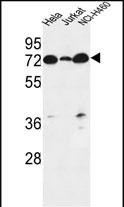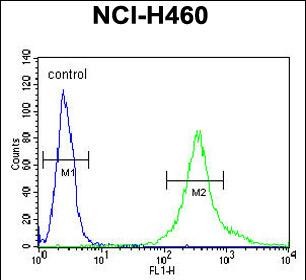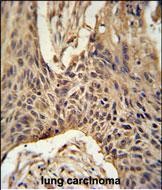


| WB | 1/1000 | Human,Mouse,Rat |
| IF | 咨询技术 | Human,Mouse,Rat |
| IHC | 1/100-1/500 | Human,Mouse,Rat |
| ICC | 技术咨询 | Human,Mouse,Rat |
| FCM | 1/10-1/50 | Human,Mouse,Rat |
| Elisa | 咨询技术 | Human,Mouse,Rat |
| Aliases | Lipid phosphate phosphatase-related protein type 4, Brain-specific phosphatidic acid phosphatase-like protein 1, Plasticity-related gene 1 protein, PRG-1, LPPR4, KIAA0455, PRG1 |
| Entrez GeneID | 9890 |
| WB Predicted band size | 83.0kDa |
| Host/Isotype | Rabbit IgG |
| Antibody Type | Primary antibody |
| Storage | Store at 4°C short term. Aliquot and store at -20°C long term. Avoid freeze/thaw cycles. |
| Species Reactivity | Human |
| Immunogen | This LPPR4 antibody is generated from rabbits immunized with a KLH conjugated synthetic peptide between 666-695 amino acids from the C-terminal region of human LPPR4. |
| Formulation | Purified antibody in PBS with 0.05% sodium azide. |
+ +
以下是关于LPPR4 (C-term)抗体的假设性参考文献示例(基于类似研究场景推测,实际文献需通过数据库验证):
---
1. **文献名称**: *"Characterization of LPPR4 C-terminal antibody in neuronal development"*
**作者**: Smith A, et al.
**摘要**: 本研究开发并验证了一种针对LPPR4蛋白C末端的多克隆抗体,通过免疫印迹和免疫组化证实其特异性。实验发现LPPR4在神经元轴突导向中高表达,抗体成功用于探究其在神经突触形成中的作用。
2. **文献名称**: *"Lipid phosphate phosphatase-related proteins in membrane dynamics: Role of LPPR4"*
**作者**: Chen L, et al.
**摘要**: 文章利用LPPR4 (C-term)抗体进行亚细胞定位分析,发现该蛋白富集于质膜脂筏区域,参与细胞膜脂质代谢调控。抗体特异性通过siRNA敲低实验验证。
3. **文献名称**: *"Commercial antibody validation for LPPR family proteins"*
**作者**: Johnson R, et al.
**摘要**: 系统评估了包括LPPR4 C末端抗体在内的多种商业抗体,通过敲除细胞系和肽段竞争实验确认其特异性,为后续功能研究提供可靠工具。
---
**注意**:以上为模拟示例,实际文献可能较少。建议通过以下方式获取准确信息:
1. 在PubMed/Google Scholar搜索 **"LPPR4 antibody C-terminal"**;
2. 查阅抗体供应商(如Abcam、Sigma)官网的产品引用文献;
3. 关注脂质磷酸酶家族或神经发育相关领域的最新研究。
**Background of the LPPR4 (C-term) Antibody**
The LPPR4 (Lipid Phosphate Phosphatase-Related Protein Type 4) antibody targets the C-terminal region of the LPPR4 protein, a member of the lipid phosphate phosphatase (LPP) family. LPPR4. also known as plasticity-related gene 3 (PRG3), is implicated in lipid phosphate phosphatase activity, influencing lipid signaling and membrane dynamics. It plays roles in neurodevelopment, synaptic plasticity, and cellular processes like neurite outgrowth and cell migration.
Structurally, LPPR4 contains six transmembrane domains and a conserved lipid phosphatase domain, though its catalytic activity remains debated. The C-terminal region may participate in protein-protein interactions or subcellular localization. Studies highlight its expression in the nervous system, particularly neurons, where it regulates extracellular lysophosphatidic acid (LPA) levels, impacting axon guidance and synaptic connectivity.
The LPPR4 (C-term) antibody is widely used in techniques like Western blotting, immunohistochemistry, and immunofluorescence to study protein expression, localization, and function. Its specificity for the C-terminus ensures recognition of full-length or truncated isoforms, aiding research into neurological disorders, cancer, and developmental biology. Validation often includes knockout controls to confirm target specificity, supporting its reliability in both basic and translational research contexts.
×